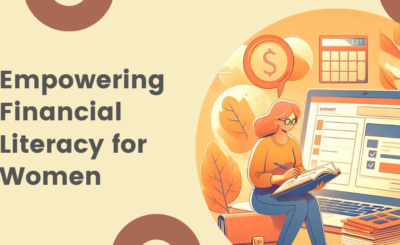“I know the bank interest is pathetic and I should do something about it”
I often hear this from women I have spoken to. Yet there is also another voice at the back of their mind, “But what if I invest my money and ended up losing it instead?”
In our recent survey, we heard from women across various age groups about their challenges with investing. More than 60% of the participants have either considered investing but did not get started or have invested before but are no longer active. The top challenge cited by this group was the risk factor, the fear of losing money when they invest. If you face similar challenge, this article is for you.
The good news is that investing is not as scary as it seems, and there are ways to manage the investing risk so you can start building up your confidence.
Investing and Risk
Firstly, it’s important to understand that in the world of investing, prices do fluctuate and your investment value will vary from day to day in the short term. However over the long run, markets generally head up. If you are investing for longer term goals like your children’s education or retirement in the next 10-20 yrs, the odds are in your favor. Therefore..
5 strategies to manage your investing risk
1) Understand your risk tolerance
A litmus test would be asking yourself this – How much can you afford to lose such that you can still sleep soundly at night? Imagine if today your investment drops in value by 5%, would you be constantly worrying all day all night and allow it to derive you of your sleep? If not, how about a 10%, 20%, 30% drop? That point where it emotionally affect you is an indication of risk level you can tolerate and this can serve as a reference point when choosing your investment vehicles.
Sometimes your risk tolerance for a particular investment depends on the amount of money at stake as well. Are you investing a large percentage of your savings or just a small portion? Would the losses in the investment adversely affect your lifestyle and financial status?
One good example would be that of Toto. Some people treat toto as a form of “investment”, putting in some money in return for the “potential” of a huge reward. If you think about it, Toto is in fact an extremely high risk investment because the probability of losing everything is so high! Yet so many people continue to “invest” every week, because in the worst case scenario, they just lose their initial bet which is acceptable to them.
There are other metrics that are used together to assess your overall risk profile and a qualified financial advisor can guide you through the process for a clearer understanding.
2) Start small and build your confidence along the way
If investing a 4 or 5 figure sum of your savings at a go scares you, another way is to go for regular investing instead. You can invest smaller amounts on a regular basis or split your lump sum into several portions to scale into the investment over time. This makes it easier physiologically and also limits your initial risk exposure so you can build up confidence.
Regular investing is also good for those with limited funds. It allow you to gain some exposure first and slowly build up your confidence instead of having to wait til you save up a large sum before investing.
3) Know what you are investing in
Read, learn, ask and find out the risks involved in the investment. Ask yourself what is the worst case scenario for the investment and are you comfortable with it. Most importantly, if the investment is too complex and confusing for you – DO NOT go into it.
4) Diversify your investment
Another way to reduce your risk exposure is to diversify your investment by investing in a basket of stocks and across different asset classes instead of only stocks. The idea is not to put all your eggs in one basket so that should one of the baskets fall, you only lose a portion of your investment and not everything. This helps to limit your risk exposure to any particular stock’s extreme fluctuation.
5) Have a plan
Having one before embarking on any investments gives you an idea of what to do in various scenarios and helps you to feel more grounded. Work out a plan with your financial advisor or by yourself first so that you have a guide of what to do in times of market volatility and follow your plan.
Some basic questions to answer in your plan include:
• What is your investment objective?
• How long are you investing for?
• What will you do if your investment goes up by X%?
• What will you do if your investment drops by Y%?
• On a regular basis, how often would you review or rebalance your portfolio?
The key is getting started and taking your first step forward
I understand that it may be tough initially. The key is in taking that first step forward, however small it may be…Perhaps it’s starting to read up on investing, joining a finance group, attending a seminar or talking to an advisor to find out your risk profile.
Once you have gotten started, with some encouragement along the way, you can start building up your confidence and investing will become easier and less intimidating.
I hope that this article has given you some encouragement to take your first step and ideas to kick start your investments!
At Women Enrich Network, my team and I are passionate about empowering more women to have a brighter financial future. We regularly conduct activities to help women gain financial skills and knowledge in a cosy, fun, all-women setting. Do join us for our upcoming cashflow game where you get to learn investing skills without risking your real money! ;)
To your Success and Happiness,
Yong Hui








